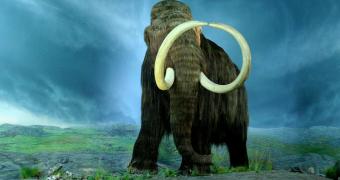Woolly mammoths were good parents and they nursed their infants for two or three years after birth, but a new research carried out by the University of Western Ontario concluded that this extra care only contributed to their extinction.
These massive animals lived north of the Arctic Circle during the Pleistocene Epoch, nearly 150,000 to 40,000 years ago, and they began weaning infants much later than modern day African elephants, mainly because of long hours of darkness.
Jessica Metcalfe, an Earth Sciences PhD student working with professor Fred Longstaffe at UWO, studied the chemical composition of adult and infant mammoth teeth, from fossil specimens alongside Grant Zazula of the Yukon Paleontology Program.
This way she realized that woolly mammoths that once inhabited Old Crow, Yukon, didn’t start eating plants and other solid foods before the age of two (and maybe even three).
Other reasons for this delay could be predatory mammals like saber-toothed cats and not enough vegetation to feed everyone.
She explains that “in modern Africa, lions can hunt baby elephants but not adults; they can’t kill adults.
“But they can kill babies and by and large, they tend to be successful when they hunt at night because they have adapted night vision.
“In Old Crow, where you have long, long hours of darkness, the infants are going to be more vulnerable, so the mothers nursed longer to keep them close.”
Metcalfe added that the delayed weaning could help researchers understand better the life of mammoths and their extinction too.
For example, “today, a leading cause of infant elephant deaths in Myanmar is insufficient maternal milk production.
“Woolly mammoths may have been more vulnerable to the effects of climate change and human hunting than modern elephants not only because of their harsher environment, but also because of the metabolic demands of lactation and prolonged nursing, especially during the longer winter months.”
Mammoths walked the Earth for millions of years before becoming extinct 10,000 years ago, “around the time the climate started warming the last time.
“Understanding their ecology, their adaptations and their behavior not only gives us insight into why they became extinct but also, potentially, gives us a better understanding of modern day mammals and how they might respond to the current warming of the planet.”
The findings were published recently in the journal, Palaeogeography, Palaeoclimatology, Palaeoecology.
You can watch Western PhD student Jessica Metcalfe explains the reasons why woolly mammoths waited so long to eat plants and how she and her fellow researchers figured it out:

 14 DAY TRIAL //
14 DAY TRIAL //